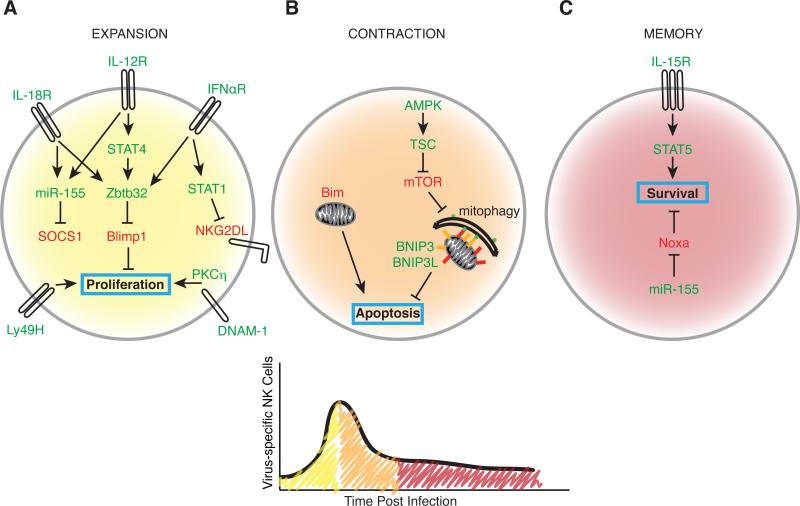FIGURE 1.
Regulation of NK cells during each phase of the response to viral infection. A, Expansion. IL-12, IL-18, and type I interferon converge to drive Ly49H+ NK cell proliferation by inducing Zbtb32 and subsequently suppressing Blimp-1. IL-12 and IL-18 also cooperate to regulate SOCS1 in a miR-155-dependent mechanism. Signaling through IFNαR also independently contributes to memory formation by protecting against NKG2D-mediated fratricide. The costimulatory molecule DNAM-1 facilitates a PKCη-dependent proliferative burst. B, Contraction. Memory formation hinges on averting Bim-mediated mitochondrial apoptosis. Recycling dysfunctional mitochondria via mitophagy mediated by BNIP3 and BNIP3L promotes the contraction-to-memory phase transition. C, Memory maintenance. IL-15 signaling is required as NK cells contract and for the maintenance of memory cells in peripheral tissues. miR-155-mediated suppression of Noxa promotes memory NK survival. Green font represents positive regulators of memory. Red font represents negative regulators of memory. Cell colors correspond to the infection time course.

